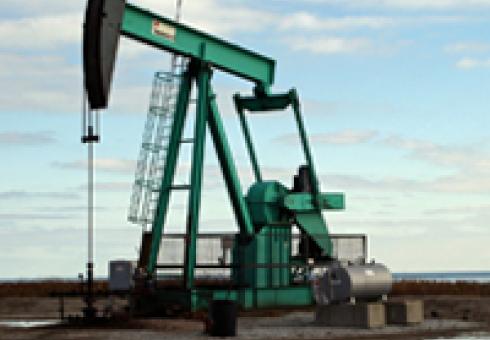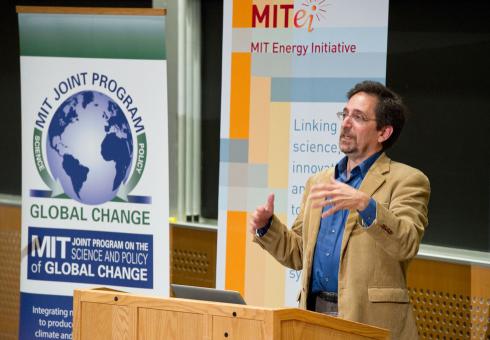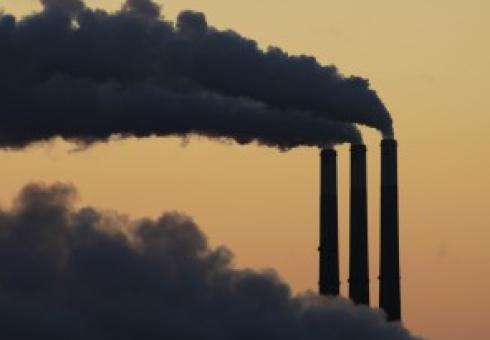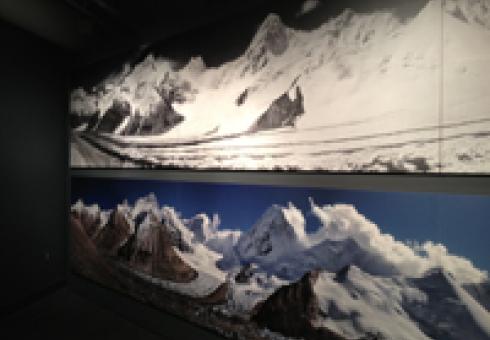News + Media
Traditionally, oil prices have been used to gauge the natural gas market; but new research shows that the future of what is currently a cheap fuel is really anyone's guess. Natural gas prices neared the lowest they've been in about a decade this past winter, as utilities scrambled to take advantage of the fuel's low price tag and producers began to turn away from the low-profit fuel. According to new numbers from the U.S. Energy Information Administration, the proportion of natural gas used to generate electricity soared to almost 35 percent in February—the highest ever for that month—while production saw its biggest decline in a year. These factors have led some to believe prices will rise again, and soon. Not so fast, say researchers at MIT.
Natural gas prices neared the lowest they've been in about a decade this past winter, as utilities scrambled to take advantage of the fuel's low price tag and producers began to turn away from the low-profit fuel. According to new numbers from the U.S. Energy Information Administration, the proportion of natural gas used to generate electricity soared to almost 35 percent in February—the highest ever for that month—while production saw its biggest decline in a year. These factors have led some to believe prices will rise again, and soon. Not so fast, say researchers at MIT.
Their study, featured in the latest issue of The Energy Journal, compares oil and natural gas prices from the early 1990s to today, showing a relationship between the pricing of the two fuels. But the nature of that relationship is constantly changing and is subject to external pressures, making it extremely difficult—if not impossible—to predict the price of natural gas in the short or long term.
"The tie between gas and oil has been exaggerated," says John Parsons, the lead author of the study and executive director of MIT's Joint Program on the Science and Policy of Global Change and Center for Energy and Environmental Policy Research. "Parity will get re-established, but it might take a long time and it might be at a different level than you thought."
The research shows that, besides the price of oil, two forces heavily influence the gas market: long-term forces, like technological change, and short-term volatility due mostly to weather or seasonal changes. Both of these forces are currently at work, as prices per million British thermal units have fallen from $10 back in 2008 to $4 last fall to $2.40 today.
Parsons attributes a majority of the drop since last fall to weather, but points to new technology known as hydraulic fracturing—along with other factors such as the global recession—as the cause of the much larger drop in price over time. He says the price may recover from the short-term drop quickly—perhaps back to $4 in just a couple years—but price recovery from the effects of hydrofracking technology could take much longer.
"And so the danger is [that] we say that there's parity" between oil and gas prices, Parsons says, "and it gives people the impression that the parity establishes itself quickly and they discount the price signal and try to keep going with producing gas."
This is what happened when prices fell in the past: Producers were slow to take the price fall seriously because of the usual short-term volatility attributed to weather and seasonal changes.
How the gas market will shape up in the long term is anyone's guess, Parsons says, largely because untapped resources are a wild card. Right now, the U.S. has a very cheap resource that provides a short-term cushion of low-priced gas. If hydraulic fracturing turns out to have limited applications, gas prices probably won't stay low for very long. But if other parts of the world rich in natural gas choose to use hydraulic fracturing, natural gas could turn into a revolutionary fuel, he says.
That will "affect the price of gas and the price of oil and the pattern of electricity production globally," Parsons says. "But none of us know."
The researchers conclude that as much as oil and gas prices have been somewhat intertwined in the past, it is likely they will continue to affect each other. Future changes in gas-to-liquid technology, for example, would further strengthen the gas-oil relationship—likely driving oil prices down, gas prices up, and re-establishing some parity between the two.
RELATED — A Shale Gas Revolution?
Caleb Waugh, co-president of MIT’s Energy Club and a doctoral student in nuclear science and engineering, says that energy is the defining challenge of this generation.
There are two ways to think about the cost of energy. There’s the dollar amount that shows up on our utility bills or at the pump. And then there’s the “social cost” — all the adverse consequences that various energy sources, from coal to nuclear power, end up foisting on the public.
New York Times’ Andrew Revkin shares lessons with MIT faculty, students at Earth Day colloquium.
From the high Himalayas to the poles, the world’s glaciers are melting. What does this mean for your community and our shared Earth? David Breashears presents his stunning new images of the Himalayan glaciers to mark the MIT Museum’s opening of its special exhibition by GlacierWorks: Rivers of Ice: Vanishing Glaciers of the Greater Himalaya. Along with David Breashears, the symposium brings together scientists and community members to debate your questions about our climate, environment, water supply and much more.
Toyota’s Tom Stricker shares his view with MIT students, faculty
Video: Watch the event
As gasoline prices continue to remain high, with the nationwide average jumping 19 cents a gallon in March, Americans and automakers alike are investing in alternatives. But what’s the most effective way forward for the auto industry? Toyota’s Tom Stricker — the company's Vice President, Technical & Regulatory Affairs — gave his take on Wednesday, April 18, during an event at MIT co-sponsored by the Joint Program on the Science and Policy of Global Change and the MIT Energy Initiative.
With the advisement of several Joint Program on Global Change researchers—including the co-director Ron Prinn and co-director emeritus Jake Jacoby—the MIT Museum opened a new exhibition “Rivers of Ice: Vanishing Glaciers of the Greater Himalaya.” The exhibit draws from mountaineer and filmmaker David Breashears’ breathtaking photographs, and places them in context with those of earlier mountaineer photographers—revealing the glacial melt that has occurred over time.
Breashears, who took the photos throughout his forty-five expeditions to the Himalaya, views the Rivers of Ice exhibition as an opportunity to trigger public dialogue as scientists and policymakers work to better understand what exactly is happening to the glaciers of the Greater Himalaya. Formed by the collision of continents, the water from the glacial ice melt in the Himalaya contributes to watersheds that serve the drinking, agriculture and business needs of more than 1 billion people throughout Asia. As the snow cover melts and the glaciers of the Greater Himalaya retract and change, the need for greater and more detailed understanding of their importance to human and ecological systems increases.
Breashears hopes the exhibit—and a related symposium taking place on Saturday, April 21—will provide insight into some of the groundbreaking research being done to better understand the glaciers’ potential impact on global environmental issues.
Rivers of Ice, once viewed, cannot be forgotten. By experiencing the photography 'in the round' and at large scale, by viewing artifacts from expeditions past and present, and by learning about the people who call the Himalaya home, MIT Museum visitors gain a deeper understanding of the grand beauty of these mountains, as well as their significance to the global challenges we face today.
The exhibit, which will be open from April 13, 2012 to March 17, 2013, is a collaboration between the MIT Museum, GlacierWorks, and the Asia Society and designed by ThincDesign.
More information about the exhibit can be found here: web.mit.edu/museum/exhibitions/rivers-of-ice.html
In an effort to share what is known, what isn't, and what can and cannot be done about climate change, MIT's John Reilly and Kerry Emanuel joined UMass Amherst researchers as part of a "Global Warning" panel convened by The Boston Globe.









